When I teach a cooking class, there’s one dish that never fails: fresh pasta.
It’s the cornerstone of the entire morning. My grandma taught me how to make fresh pasta as she would have passed down a ritual, so I try to do the same with my guests. It’s through ancient and wise gestures that you can acquire the skills to make fresh pasta at home.
I take the jars of flour from the shelf, dust them off, and place them on a wooden board.
Here, always, comes the first question: Why a wooden board, if there’s already such a beautiful marble table here? Can’t we make the dough on the table? This is the moment to awaken their senses.
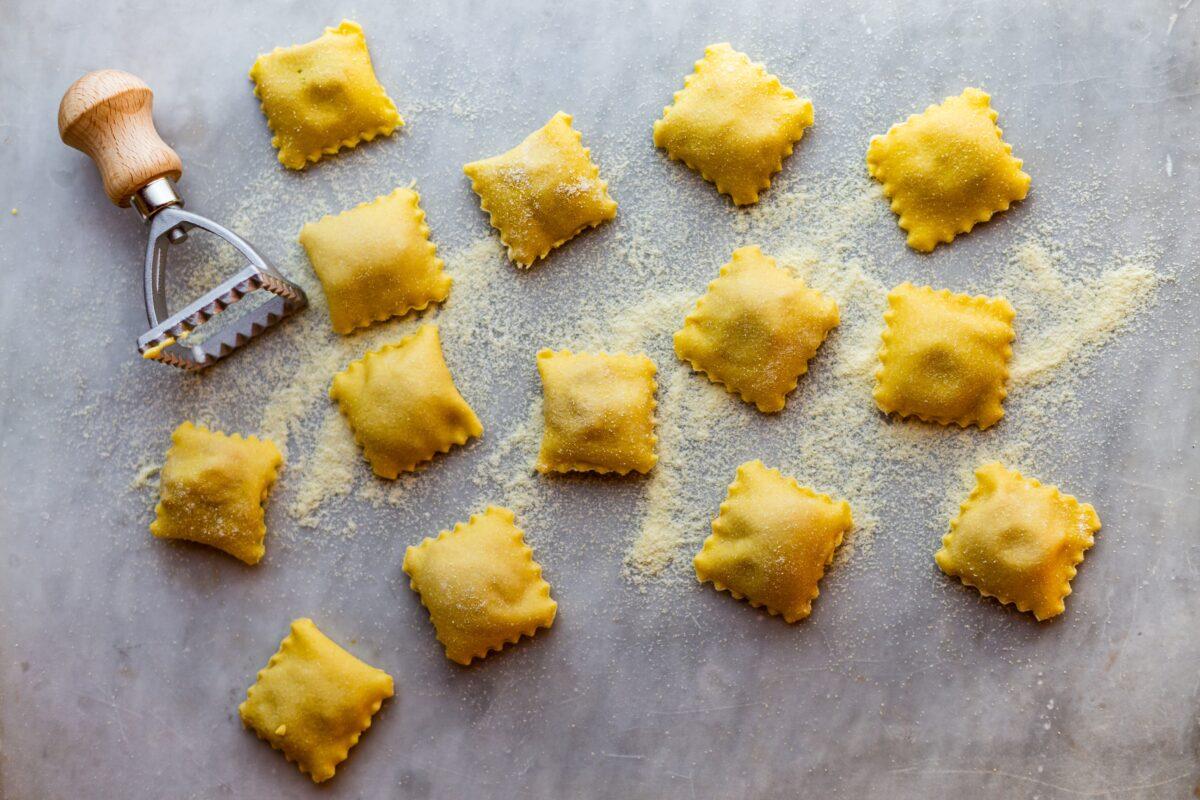
I invite them to touch both the marble and the wooden board, as the senses don’t lie. The marble is cold and smooth; we can make a pie crust here because you won’t overheat the butter with the work of your hands. The wooden board is instead rough and porous. Warmth passes between the wood and your hands, turning a few handfuls of flour and some eggs into an elastic and versatile dough.
When you cook, you have to keep all your senses alert. Take a pinch each of the two flours, a soft wheat flour and durum wheat semolina, and sniff them, rub them between your fingers to figure out the differences. In my family, fresh pasta follows this rule: half and half. My family has always imposed on me just a few essential rules, and those rules were usually related to the ingredients to use in a specific recipe.
When my students feel comfortable enough kneading the dough, the second question comes, as timely and expected as pumpkin in autumn: So, Italians don’t buy dried pasta? Do you always make fresh pasta? And they look at me with a mixture of disbelief and respect, as they finally come to understand the effort, including the physical, behind a bowl of tagliatelle with meat sauce.
I smile, remain silent for a moment, pondering the answer, and then admit that no, we mainly buy dried pasta, which is very good, even here in Tuscany. Fresh pasta is usually left for special occasions, when you want to celebrate something.
Then I keep thinking about it to myself as we continue with the lesson, and I realize that I don’t make enough fresh pasta, that more and more of our special occasions have lost the scent of semolina and the large wooden tray where Grandmother would neatly arrange nests of tagliatelle to dry.
So, a few Sundays ago, I pulled down the two jars of flour and placed the wooden board onto the table. Even without an audience, I felt like making fresh pasta, my personal miracle of flour and eggs. I made potato and pumpkin tortelli for lunch, just for my husband, Tommaso, and me.
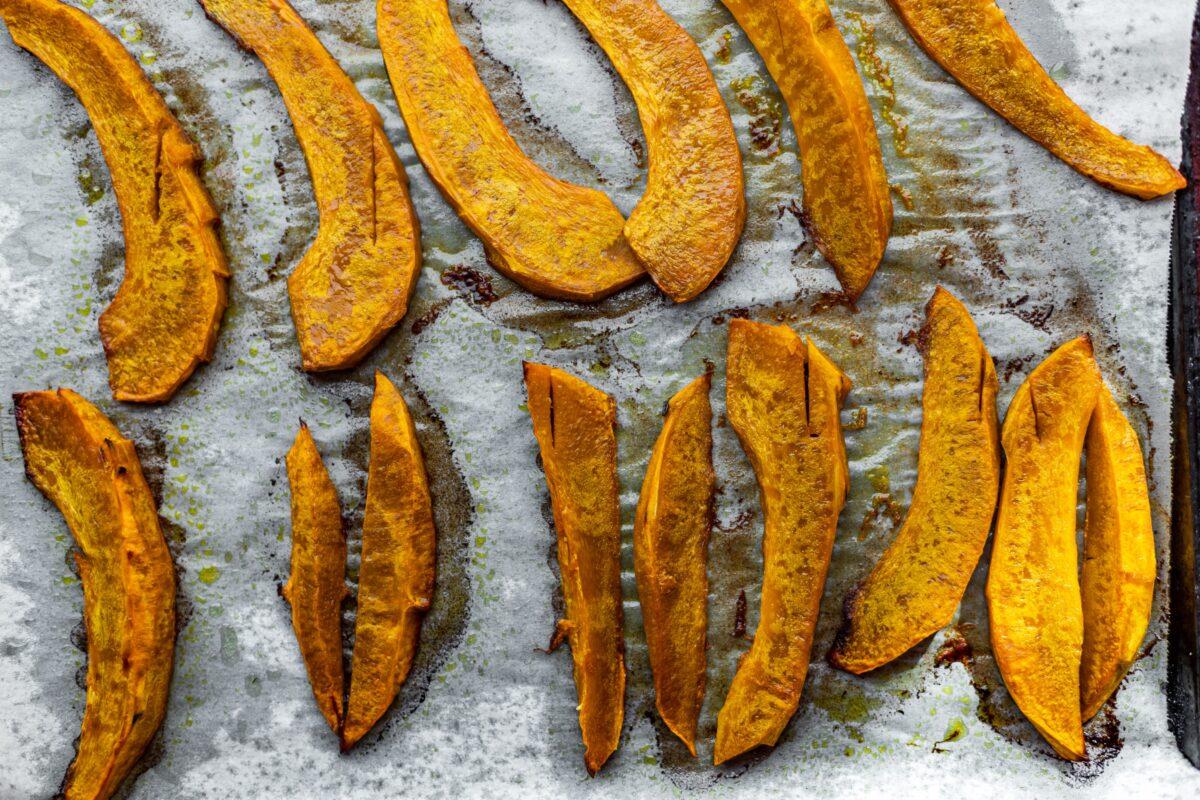
An Autumnal Pasta
When Tommaso and I started to live together, I would brag to everyone about how I managed to bring this Florentine guy to the countryside. Actually, he’s not a pure city boy; his family is from Mugello, a hilly, mountainous area above Florence, and these roots emerge in his food tastes.While I have always had a soft spot for ravioli maremmani with ricotta and spinach, he would rather eat, every day, for lunch and dinner, tortelli mugellani, filled with potatoes and a hint of garlic and parsley.
So I made him tortelli, though I tried to sneak some pumpkin in, previously roasted with olive oil, salt, pepper, and a generous pinch of nutmeg. It’s autumn, and I want every dish I make to reflect the colors and scents of these misty days, lit by the flames of the yellow and red leaves of the trees in the woods.
How, then, to dress the tortelli? Brown butter and crispy fried sage are a winning pair, but this time I added also a handful of pine nuts. Melt the butter over low heat with sage and pine nuts, and cook it until golden brown and heavenly toasted, with a slight hazelnut aroma. In the meantime, the heat will turn the sage leaves into crispy bits and the pine nuts into golden nuggets.
Potato and Pumpkin Tortelli With Brown Butter, Sage, and Pine Nuts (Tortelli di Zucca e Patate)
Serves 4 to 6For the fresh pasta:
- 1 cup (150 grams) all-purpose flour
- 3/4 cup (150 grams) semolina flour
- 3 eggs
- 1 teaspoon extra virgin olive oil
- Salt, to taste
- 1 small pumpkin
- 3 tablespoons extra virgin olive oil
- Salt and pepper, to taste
- Pinch of nutmeg
- Freshly ground black pepper
- 2 small potatoes
- 2 tablespoons pecorino Toscano, grated, plus extra for serving (or pecorino Romano)
- 1/4 cup butter
- A dozen sage leaves, cut into strips
- 1/2 cup pine nuts
Crack the eggs into the well and add a good pinch of salt and a teaspoon of olive oil.
Mix the flour and the eggs with a fork until crumbly, then knead the dough, adding cold water if needed. Keep on kneading, more and more, as to develop the gluten that will give strength to the sheets of pasta. Use the same motions as for kneading bread: Hold the dough with one hand while you roll it away from you with the other, using the heel of your palm.
After a while, the dough should reach the right consistency: smooth, velvety, and no longer sticky. Wrap it in plastic wrap and let it rest for 30 minutes at room temperature.
Now, make the filling. Peel the potatoes and place them in a pot of cold water. Bring to a boil and cook the potatoes until you can easily pierce them with a knife, about 15 minutes.
In the meantime, preheat the oven to 390 degrees F and line a baking tray with parchment paper. Peel and slice the pumpkin into 1/2-inch-thick slices and arrange on the tray. Brush the pumpkin slices with olive oil, then season with salt, pepper, and nutmeg. Bake for about 20 minutes, until soft and slightly caramelized on the edges.
Remove pumpkin from the oven and transfer about 14 ounces to a large mixing bowl to use for your filling; save the rest for another use. Add the boiled potatoes, then mash everything together. Add the grated pecorino cheese, season with salt and pepper, mix well, and set aside.
Now, roll out the pasta dough. Flour your wooden board and a large baking tray.
The most important thing to remember, whether you’re using a classic long rolling pin or a pasta machine, is to roll it out over and over again, rolling and stretching it as much as you can. Make a paper-thin sheet of pasta, and lay it on the floured wooden board.
Place little mounds of filling, about one teaspoon each, at regular intervals on one half of the sheet of pasta. Fold the other half of the sheet over to cover the dotted fillings, and press the dough gently with your fingers all around the fillings to seal. With a scalloped pastry cutter, cut the pasta into squares—forming your tortelli—and put them onto the floured tray in one layer.
To cook the tortelli, bring a large pot of water to a boil, salt the water, and pour in a tablespoon of extra virgin olive oil—this will prevent the tortelli from sticking to each other.
Cook the tortelli in batches, according to the size of the pot, for a few minutes each, until the pasta is soft but still al dente.
In a large pan, melt the butter with the sage and pine nuts and cook until the butter is golden, with a delicate, toasty smell.
Drain the tortelli and toss them in the pan with the butter, just enough to coat them evenly. Serve them right away, possibly with more grated pecorino.
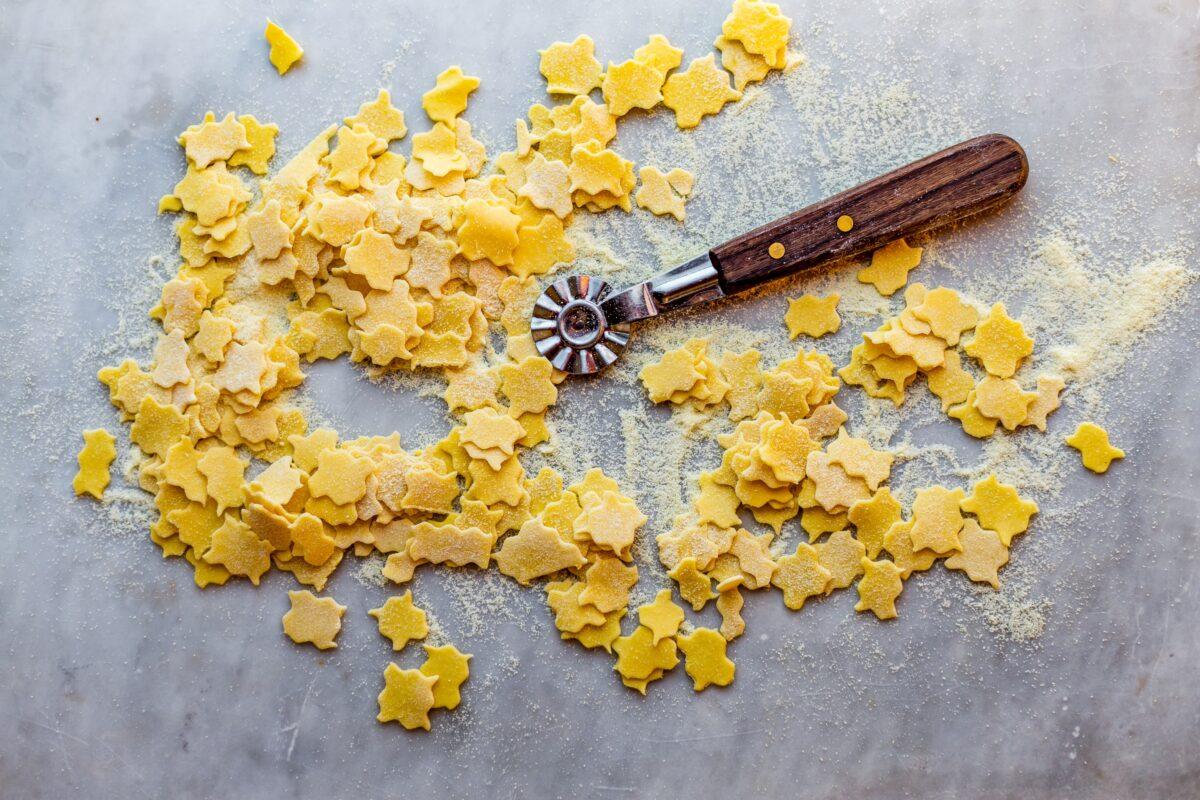
Zero-Waste Tip
When you make tortelli, you might have some leftover sheets of pasta. I usually cut them with a pizza cutter or a fluted pastry wheel into small pieces that resemble tiny stamps or even confetti, and coat them with semolina flour. I lay them on a tray and freeze them, then gather them into a plastic bag and stash it in the freezer. When I make a vegetable soup, I love to add a handful of this pasta in the last minutes of cooking.Giulia Scarpaleggia is a Tuscan-born and -bred food writer, food photographer, and author of five cookbooks, including “From the Markets of Tuscany.” Find her online at her blog, JulsKitchen.com. Reprinted with permission from JulsKitchen.com

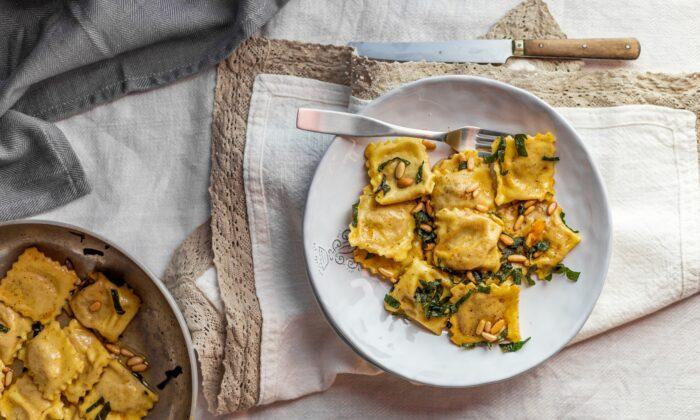
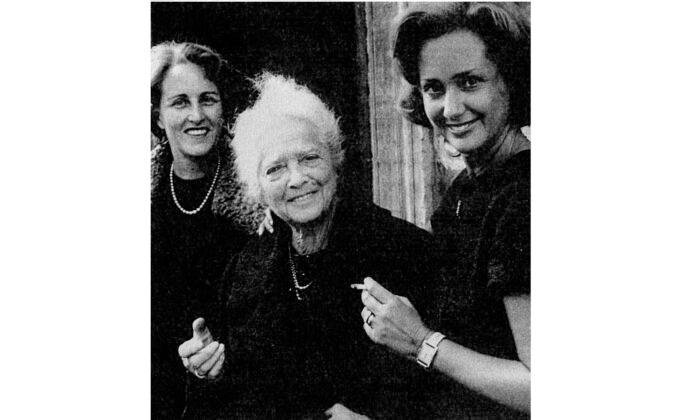
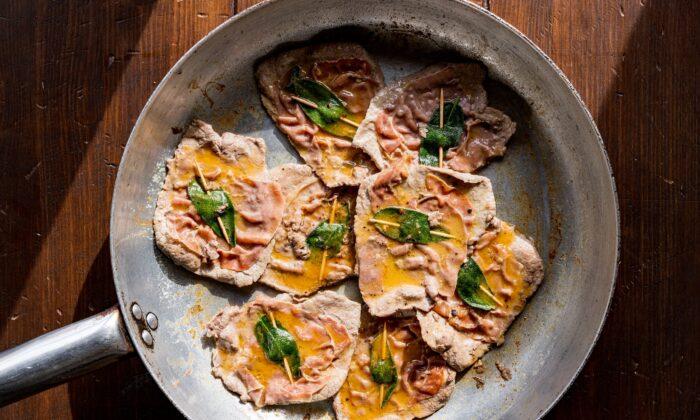
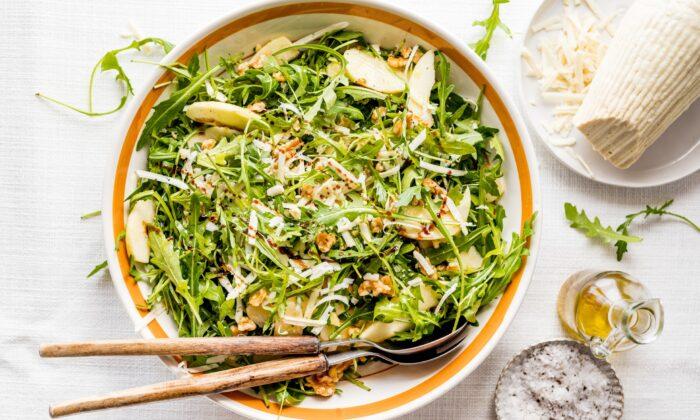
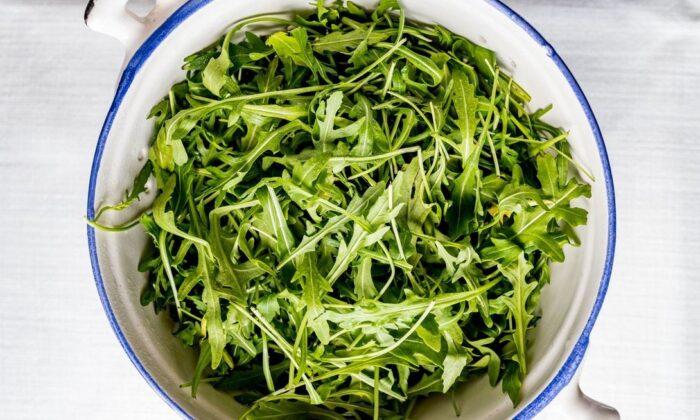
Friends Read Free